One of the most exciting times of the year to visit wine country is after harvest is completed. Leaves on the vines display their magnificent colors, winemakers and winery owners are relaxed (with extra time to converse and share their wines with visitors), and most of the tourists have returned home. I experienced all of that and more in mid-November when I traveled through the beautiful Beaujolais region. In this stunning wine region, the spirit of “Beaujonomie,” a reference to the Beaujolais lifestyle of sharing good wine with food, family and friends, was evident everywhere.
During my visit, I relished in the diverse vineyards and landscape of Beaujolais, its traditional fare, wines that had just been bottled (this year’s Beaujolais Nouveau was a brilliant surprise) and those from the expressive, exceptional areas of Beaujolais, Beaujolais-Villages and ten Crus, as well as the warm, welcoming people who were as genuine as their wines were authentic and affordable. Between sips and swirls, conversation and cuisine, I embraced the Beaujolais lifestyle and soaked up as much as I could about its unique place in the wine world.
The Essentials: Beaujolais’ Location, Climate, Soil, Varieties
Beaujolais is bordered by the Maconnais region to the north, the Monts du Lyonnais hills to the south, the Saone River Valley to the east, and the Monts du Beaujolais hills that are foothills to the Massif Central to the west. Vineyards stretch 55 km from the north to south and 25km from the east to west. Most vineyards are on south-southeast facing slopes that are, on average, 300 metres above sea level.
RELATED: A Wine Lover’s Guide To Visiting Champagne France
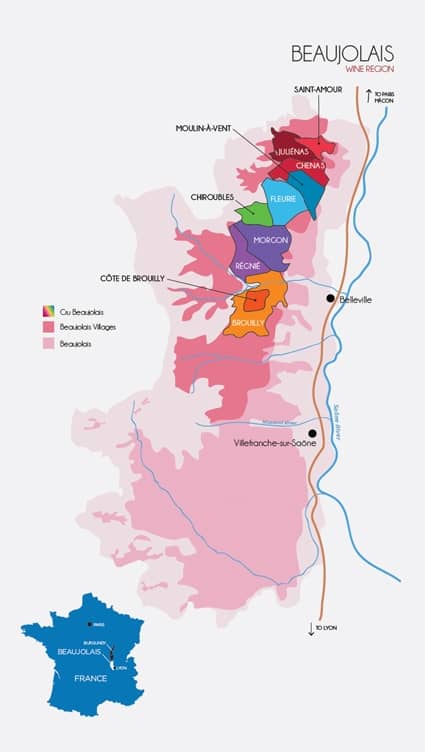
With often harsh winters, rainy springs, hot and dry summers, and mild autumns, Beaujolais enjoys a temperate semi-continental climate. Diverse soils, including alluvial clay, flinty clay, pink and blue granite, limestone rock, river stones, and in some areas, sand, provide a unique foundation. Here, the Gamay Noir grape, the only red grape cultivated in Beaujolais, and Chardonnay, the sole white grape that accounts for a mere 5% of total production and only 2% of vineyard surface, thrive.
The Gamay grape, a cross between Pinot Noir and Gouais, has found its true expression in Beaujolais. During my tastings, the grape showed a variety of qualities, affected by its terroir and style of the winemaker, and was just as enticing enjoyed young as it was from an older vintage. Bright and aromatic, notes of fresh red fruit such as raspberries and cherries, rich blackberries and black cherries, red flowers, and black pepper were predominant in the Gamay and elements of vibrant fresh fruit and white blossoms characterized the Chardonnay I sipped.
In the Beaujolais Vineyard and Cellar
Environmental practices of biodynamics, sustainability, and organic farming are widely practiced in Beaujolais. Those with whom I talked shared that they desire to respect the land, reduce production costs, increase the quality of the wine, and be stewards of the vineyards for future generations. The majority of grapes are hand-picked due, in part, to the fact that so many vineyards are on steep hillsides. In fact, more than a few producers I visited used the traditional horse and plow in the vineyards.
Many of the red wines in Beaujolais are vinified using a traditional and unique technique: semi-carbonic maceration. Whole bunches of uncrushed grapes are placed in vats that are sealed and filled with CO2 in order to remove the oxygen. Intracellular fermentation occurs and when the alcohol level reaches around 2% ABV, grape skins break and juice is released. One result is that wines tend to be lighter in color with moderate tannins and an elegant, fruit forward profile.
The 12 AOCs (Appellations) and 10 Crus of Beaujolais
In France, the vast majority (over 80%) of wine production is AOC, Appellation d’Origine Contrôlée. An AOC product (such as wine or cheese) indicates that the production process is based on “established skills and expertise in a specific geographic area;” the AOC protects the name of the wine in France. For example, no one in the United States is able to produce a Beaujolais-Villages, Brouilly or Morgon wine… In essence, an AOC designation ensures winelovers that with each sip of wine, quality and a clear identity are evident.
RELATED: Guide Beaujolais 10 Crus and 12 Appellations
A Cru designation indicates that the wine is produced from a geographic restricted area that has agreed to adhere to specific rules. Known through the years for their wines of highest quality based on distinctive terroir, climate, winemaking style, and more, the 10 Crus of Beaujolais (Saint-Amour, Juliénas, Chénas, Moulin-à-Vent, Fleurie, Chiroubles, Morgon, Régnié, Côte de Brouilly, and Brouilly) are distinctive and exceptional. Beaujolais and Beaujolais Villages AOCs, the most expansive wine growing areas, are not considered crus, although wines from these areas are those to discover, too.
The time is now to explore and appreciate the world of Beaujolais, a very special place.
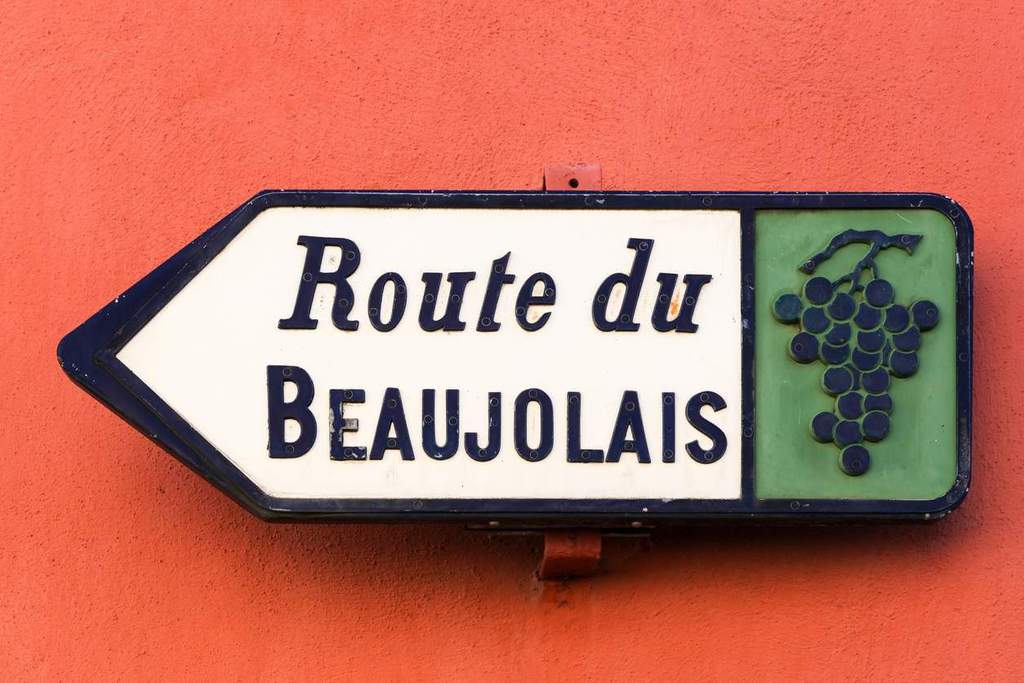
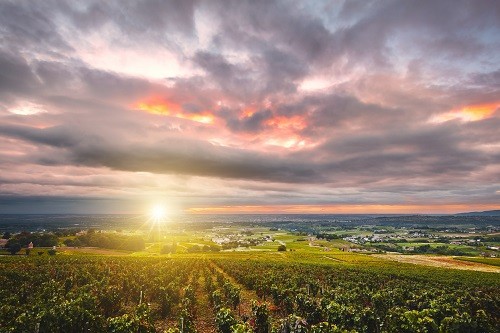
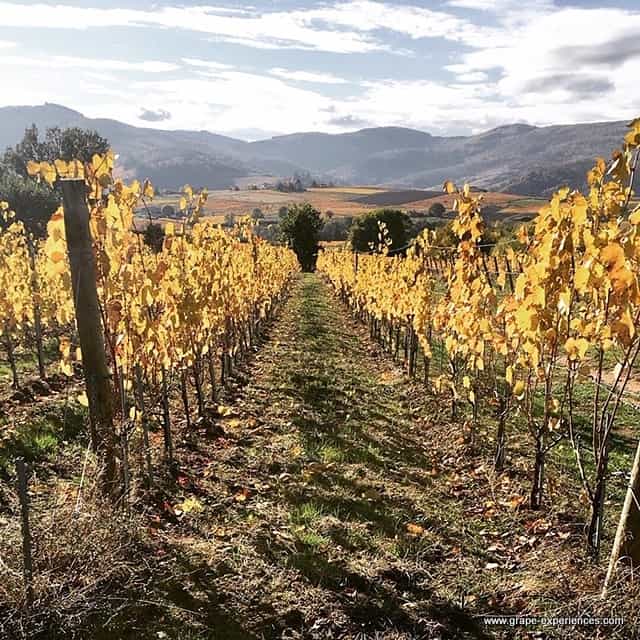
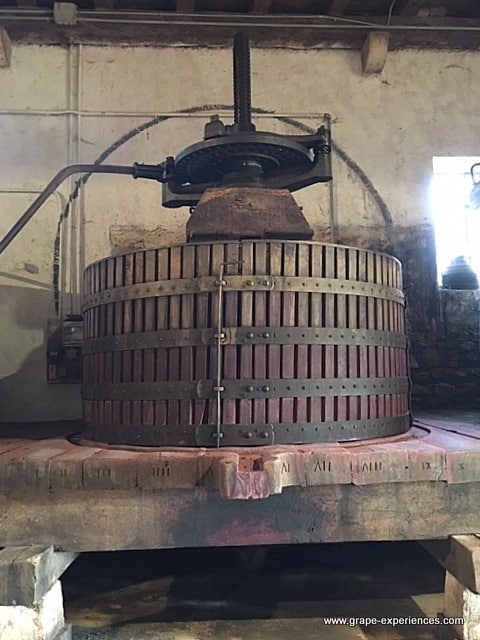
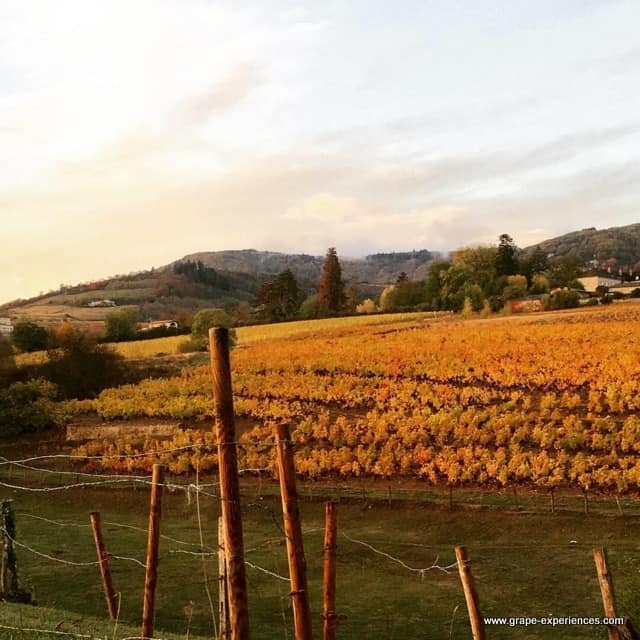
[…] A Quick Guide to the World of Beaujolais […]